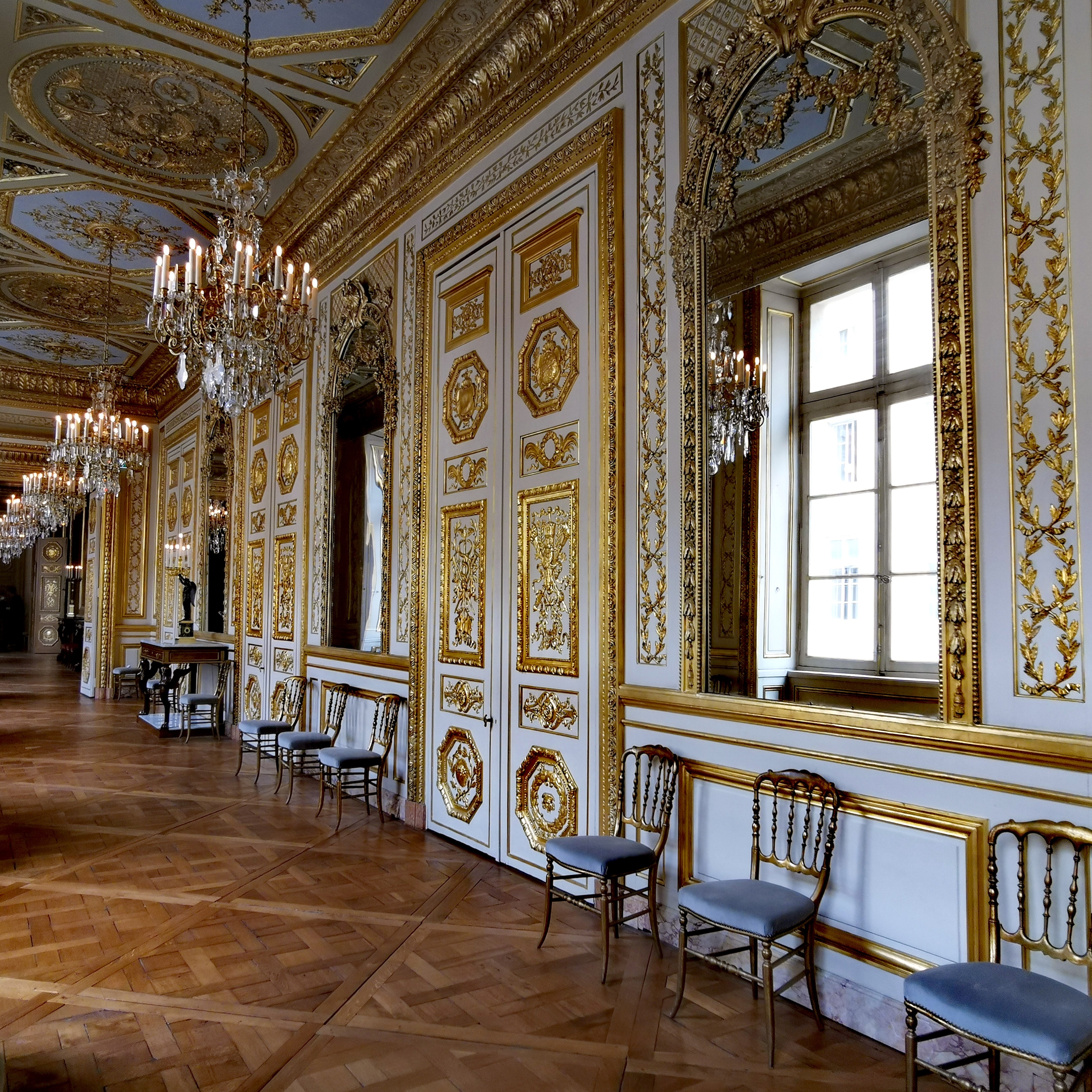The “hôtel de la Marine” rises from the ashes, after more than four years of restoration (2017-2020). This imposing building closes – with its counterpart, the hôtel des Monnaies – the perspective offered by Place de la Concorde.
Honestly, I don’t know if we have to call it here “hôtel de la Marine” or “hôtel du Garde-Meuble”, since the French administrative entity in charge of national monuments (Centre des Monuments Nationaux) has taken the decision, whenever possible, to restore the building in its original decor, that is to say the decor existing in the 18th century when the place was still known as the “Royal Garde-Meuble”.
Because it must be said: the building has known several lives. Just like this Place de la Concorde which it dominates and which itself has known several names.
In 1748, Louis XV sought to assert his power by erecting an equestrian statue dedicated to his glory. The equestrian statue was certainly completed, but the project gained magnitude, with the construction of a monumental esplanade dedicated to the King.
In 1753, Ange-Jacques Gabriel, First Architect of the King, created the final plans of the future Place Louis XV.
In 1757, only the facades of the hôtel des Monnaies and the hôtel du Garde-Meuble were erected, with no building behind – thus creating a surreal theatrical setting.
It was not until 1767 that the illusion became reality: the Royal Garde-Meuble – whose mission was to acquire and preserve the royal furniture, the King’s collections, the Crown diamonds and the jewels of the royal family – took over the newly constructed building behind the theater facade.
In 1789, the French Revolution breaks out. Symbol of despotism, the Royal Garde-Meuble is abolished in 1793 and royal furniture and art works are sold.
Louis XIV and Marie-Antoinette are guillotined under the balconies of this monumental building, on this immense esplanade now called Place de la Révolution.
The Ministry of the Navy takes over the premises in 1799 and will not leave them until 2015. By the way, the ceremonial rooms that you will see here are restored according to the decor desired by the Ministry of the Navy in the 19th century.
On October 25, 1836, Louis-Philippe witnesses from the loggia of the hôtel de la Marine the erection of the Luxor obelisk on the esplanade.
On April 27, 1848, Victor Schoelcher, Secretary of State for the Navy, abolishes slavery in one of the ceremonial rooms.
During Nazi Occupation, the German Navy staff takes over the premises, until the Liberation of Paris in August 1944: the last fights concentrate around the Place de la Concorde and many Nazis take refuge in the hôtel de la Marine. They eventually surrender, caught between the 2nd Armored Division in Rivoli street and General de Gaulle descending the Champs-Elysées.
So many lives, so many events experienced by this magnificent building, a true witness to history.
September 17, 2021


















